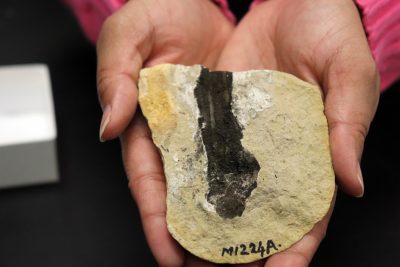Fossilized by Climate Change
December 5, 2022

Climate change can affect life on Earth. According to new research, it can also affect the dead.
A study of exceptionally preserved fossils led by a graduate student from the Jackson School of Geosciences has found that rising global temperatures and a rapidly changing climate 183 million years ago may have created fossilization conditions in the world’s oceans that helped preserve the soft and delicate bodies of deceased marine animals.
The fossils include squid-like vampyropods with ink sacs, ornate crustacean claws and fish with intact gills and eye tissue. The fossils came from the Posidonia Shale in southern Germany, Strawberry Bank in southern England, and Ya Ha Tinda in Alberta, Canada.

Despite being from different locations and marine environments, the fossils were all preserved in a similar manner. Geochemical analysis revealed that the conditions needed to preserve such captivating fossils could be connected to Earth’s climate.
“When I started the research, I had no idea if they would preserve the same way or a different way,” said lead author Sinjini Sinha. “I was curious what led to the exceptional preservation.”
The research was published in December 2021 in Scientific Reports. The authors examined different parts of fossil specimens under a scanning electron microscope equipped with a tool to detect chemical elements present in the minerals. And in all of them, one element dominated: phosphorous.
“We expected there to be some similarities, but finding that they were so similar was a bit surprising,” said coauthor Rowan Martindale, an associate professor at the Jackson School.
Phosphorous usually is not available in high concentrations within marine sediments and does not get buried in large amounts except in unusual circumstances. According to the researchers, a period of extreme and rapid climate change caused by an influx of greenhouse gasses into the atmosphere by volcanic eruptions during the Early Jurassic could be just that circumstance, with the rising temperatures causing increased rainfall that carried large amounts of phosphorous-rich sediment from rocks on land into the world’s oceans.
Back to the Newsletter